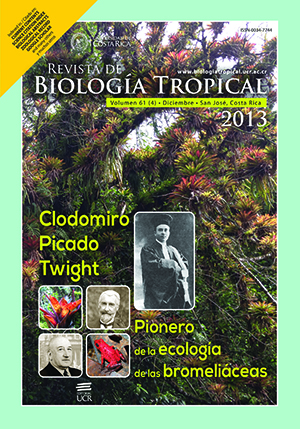Abstract
The joint interpretation of phenology and nutritional metabolism provides important data on plant tissues reactivity and the period of gall induction. A population of Aspidosperma macrocarpon (Apocynaceae) with leaf galls induced by a Pseudophacopteron sp. (Psylloidea) was studied in Goiás state, Brazil. Assuming the morphological similarity between host leaves and intralaminar galls, a gradient from non-galled leaves towards galls should be generated, establishing a morpho-physiological continuum. The phenology, infestation of galls, and the carbohydrate and nitrogen contents were monthly evaluated in 10-20 individuals, from September 2009 to September 2010. Our objective was to analyze the nutritional status and the establishment of a physiological continuum between the galls and the non-galled leaves of A. macrocarpon. The period of leaf flushing coincided with the highest levels of nitrogen allocated to the new leaves, and to the lowest levels of carbohydrates. The nutrients were previously consumed by the growing leaves, by the time of gall induction. The levels of carbohydrates were higher in galls than in non-galled leaves in time-based analyses, which indicateed their potential sink functionality. The leaves were infested in October, galls developed along the year, and gall senescence took place from March to September, together with host leaves. This first senescent leaves caused insect mortality. The higher availability of nutrients at the moment of gall induction was demonstrated and seems to be important not only for the establishment of the galling insect but also for the responsiveness of the host plant tissues.##plugins.facebook.comentarios##
Downloads
Download data is not yet available.






